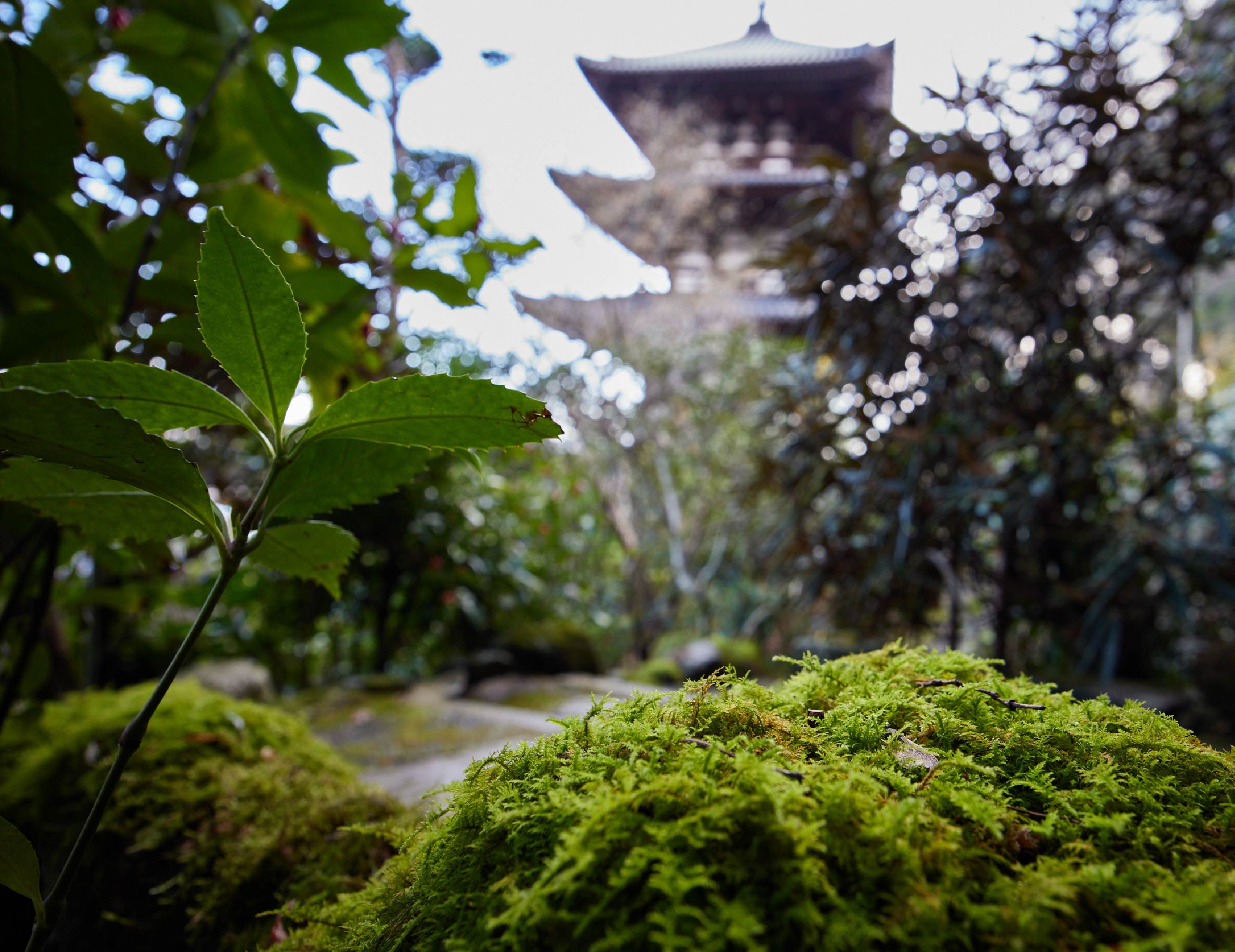
Discovering Katsuragi City,
finding serenity by immersing yourself
in nature and history.
Katsuragi City has ancient temples a rich historical heritage and a magnificent mountain ridge in the distance.
It has flourished as a significant transport hub since ancient times and is now also a favourite destination for hikers and mountain climbers.
Enjoy a trip to Katsuragi City, which retains the atmosphere of an ancient city and where the surrounding nature liberates your mind.
Scroll
KATSURAGI CITY EPISODE
01
Experience a sumo museum,
one of the few in the country,
where you can actually feel like a
sumo wrestler.
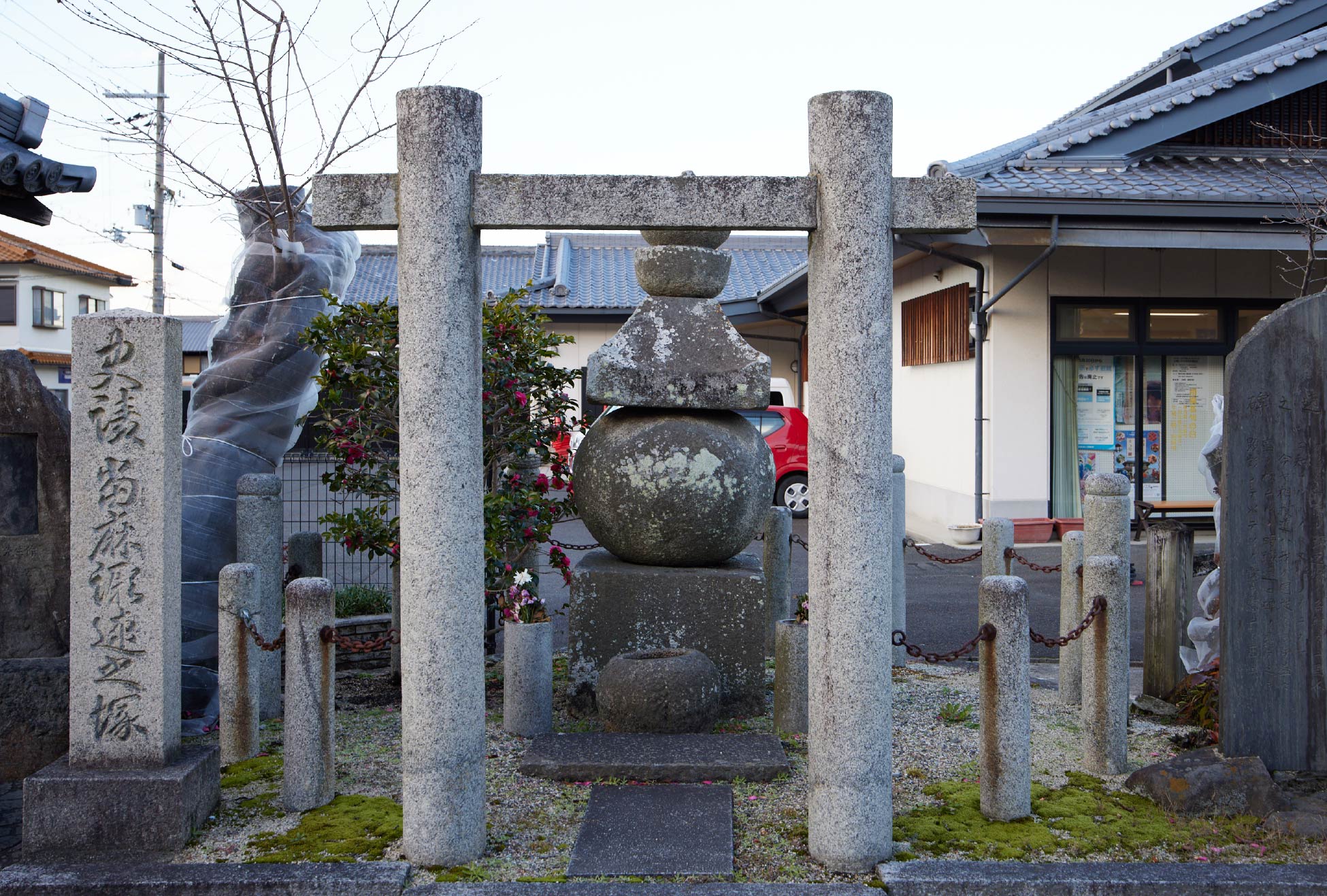
Sumo Kan Kehayaza Museum: a memorial tower honouring Taima no Kehaya,
Japan's first Sumo wrestler who died in battle.
Katsuragi City holds the esteemed title of being the birthplace of Sumo, steeped in myths and historical heritage. Over 2000 years ago, the oldest Japanese book, Nihon Shoki (Chronicles of Japan), recounts a legendary match between Taima no Kehaya, a local wrestler, and Nomi no Sukune, a formidable figure from Izumo Province, in the presence of Emperor Suinin.
This historic encounter, documented in the early 4th century, marked the inception of Tenran Sumo, the oldest recorded grand sumo tournament witnessed by an emperor, laying the foundation for Japan's revered national sport.
Among the city's unique treasures is the Katsuragi City Sumo Museum "Kehayaza", a testament to Katsuragi's enduring connection to Sumo's rich legacy.
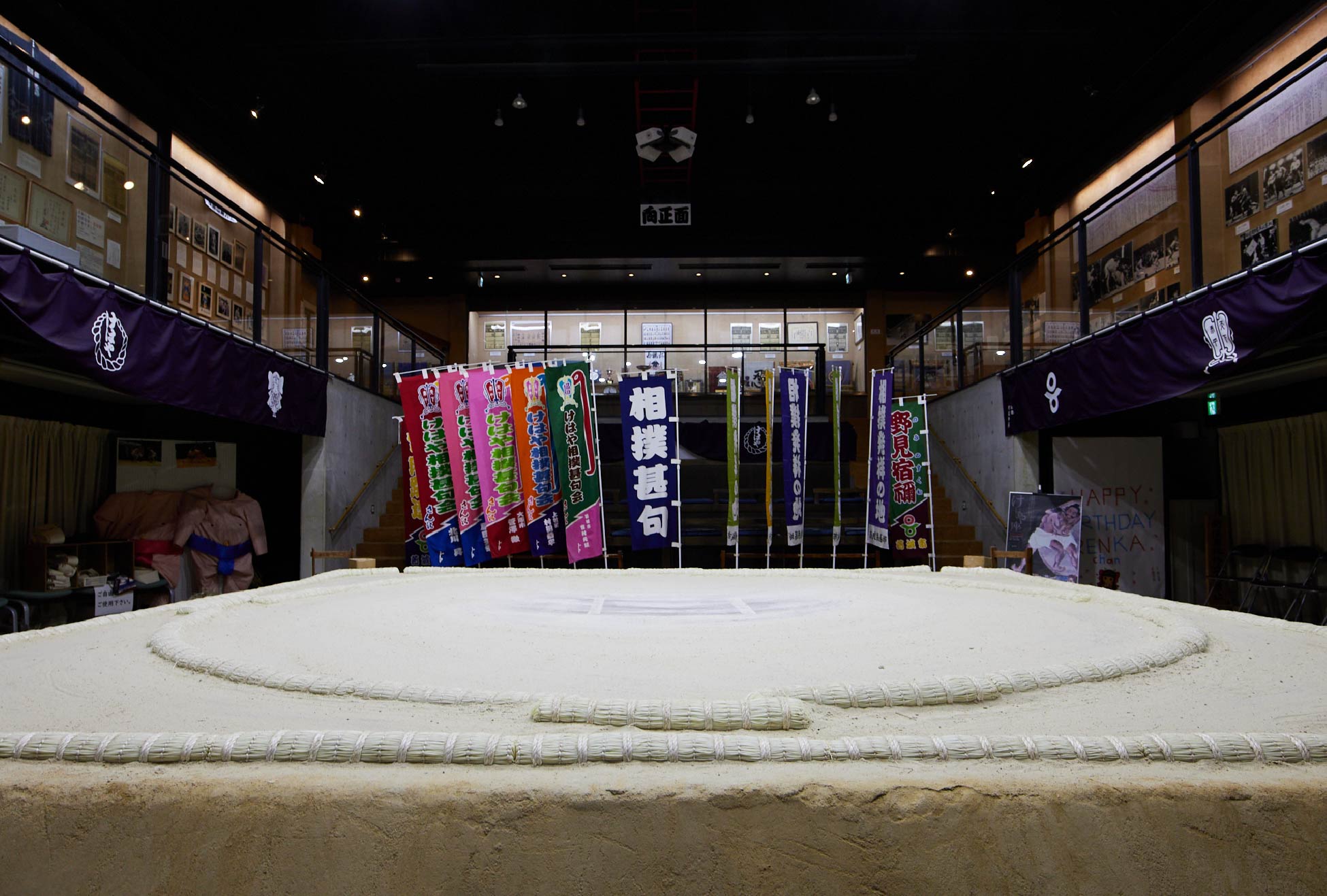
Imposing realism, the faithfully reproduced Sumo ring's dominant presence.
As you step into the museum, your gaze is immediately drawn to the powerful presence of the sumo ring. Traditionally revered as sacred ground, only rikishi (sumo wrestlers) and gyoji (referees) were permitted to set foot on it. However, within the museum's confines, visitors can step freely into the ring, shoes firmly in place. From the elevated Masu seating area, guests can survey the ring below, envisioning the electric atmosphere of main tournaments. For a more immersive experience, one can don a mawashi costume and take to the ring in a simulated match, capturing the essence of Sumo firsthand. The exhibits, meticulously crafted to match the scale of those seen in actual sumo tournaments, imbue a palpable sense of presence.
Rain or shine, this hands-on facility offers a unique and engaging experience for all who enter.
Sumo Museum "Kehayaza"
【Phone】 0745-48-4611
【Hours】 10:00 AM–5:00 PM
【Address】 83-1 Taima, Katsuragi City, Nara Prefecture
【Access】 About a 5-minute walk from Taima-dera Station on the Kintetsu Minami-Osaka Line
【Parking】 Available
【URL】 https://www.city.katsuragi.nara.jp/soshiki/sumokan/5875.html
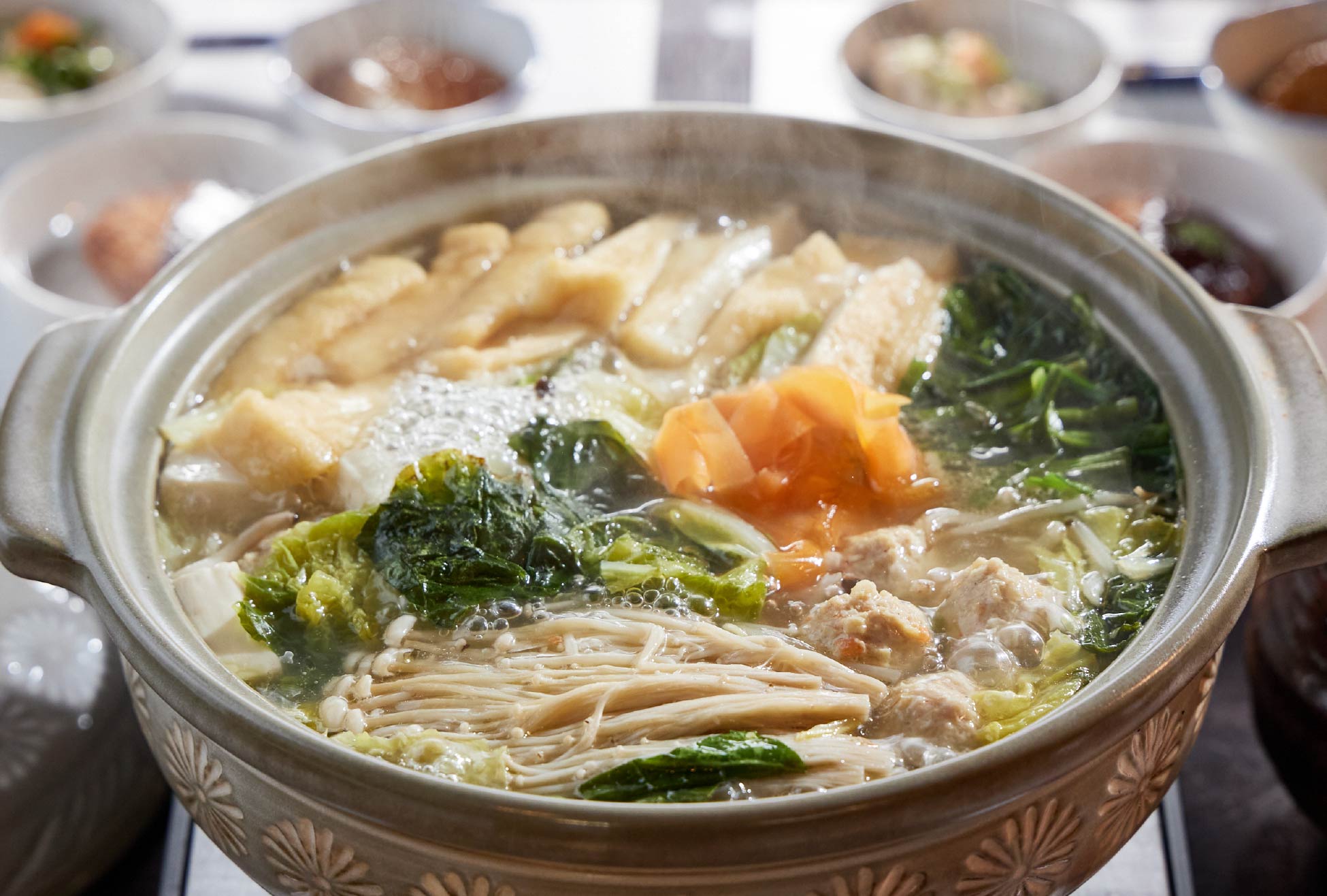
Immerse yourself in Sumo culture, Chanko-nabe delight with Sumo music and yose-daiko drumming, a journey to ancient times.
Once you've savoured the experience of stepping into the sumo world, treat yourself to culinary delight at Dining Hakuho. This chanko-nabe restaurant, overseen by Miyagino Oyakata, the former Yokozuna Hakuho and Katsuragi City Tourism Ambassador, promises an authentic taste of tradition. Crafted by the chef's disciples, the mild broth and secret recipe chicken balls tantalize the palate, leaving a lingering sense of nourishment with every bite. Nestled within a charmingly renovated old house, the relaxed atmosphere enhances the pleasure of indulging in direct culinary heritage.
Dining HAKUHO
【Phone】 Lunch: 090-3203-9026, Dinner: 0745-49-0769
【Hours】 Lunch: 11:00 AM–2:00 PM, Dinner: 5:30 PM–10:00 PM
【Address】 354 Teraguchi, Katsuragi City, Nara Prefecture
【Access】 About 4 minutes from Katsuragi IC on Minami-Hanna Road
【Parking】 Available
【URL】 https://www.instagram.com/dining_hakuho/
KATSURAGI CITY EPISODE
02
Immerse yourself in Sumo culture,
Chanko-nabe delight with
Sumo music and yose-daiko drumming,
a journey to ancient times.
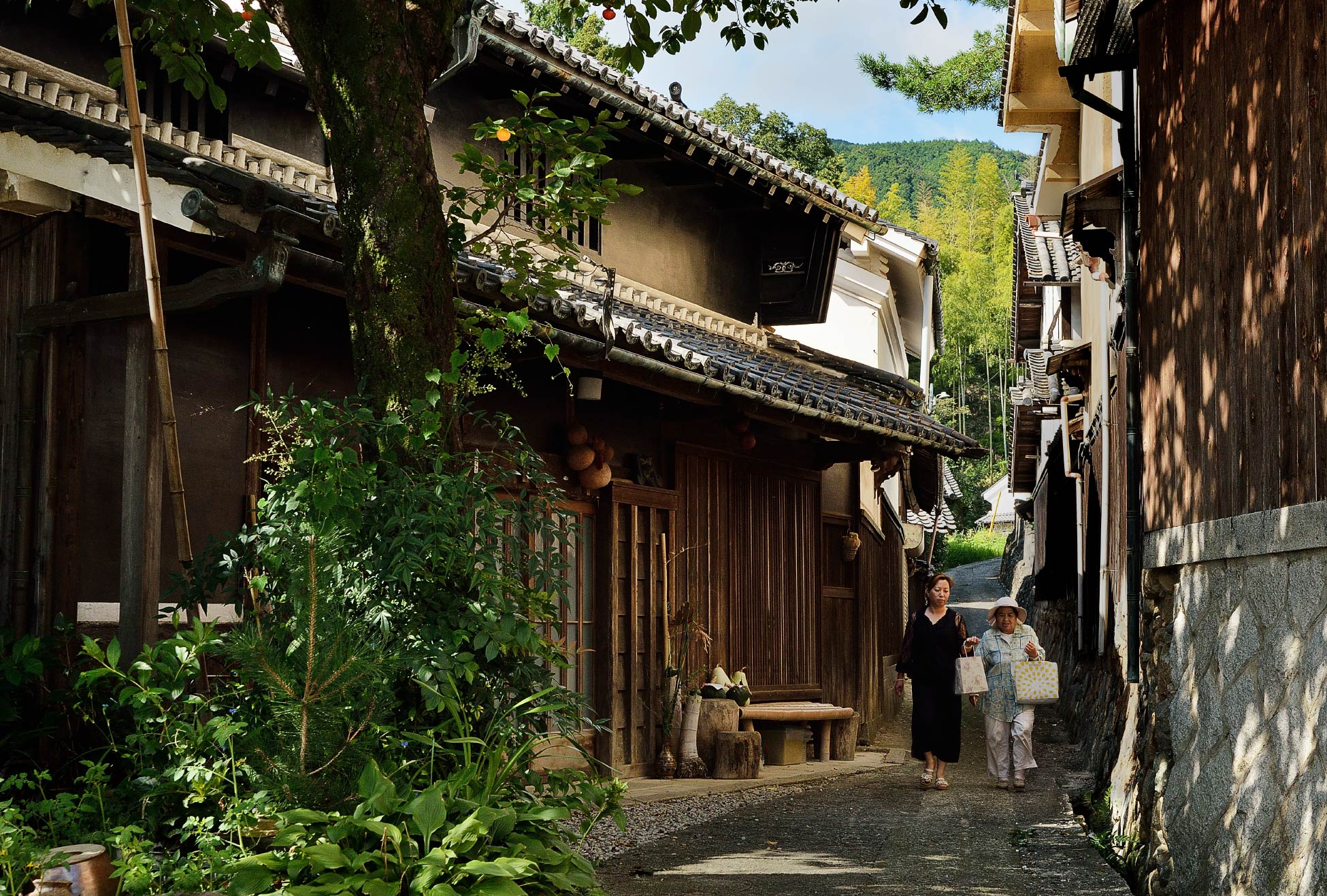
Exploring shingle-walled alleyways, immersing yourself in an even more atmospheric atmosphere.
The Takenouchi Kaido is a cornerstone of Katsuragi City's rich historical legacy. This 26-kilometer route, stretching from Sakai City in Osaka Prefecture to Nagao Shrine in Katsuragi City, boasts a venerable history spanning 1,400 years. Revered as "Japan's oldest official road (national road)," it serves as a testament to the enduring significance of ancient pathways in shaping Japan's cultural landscape.
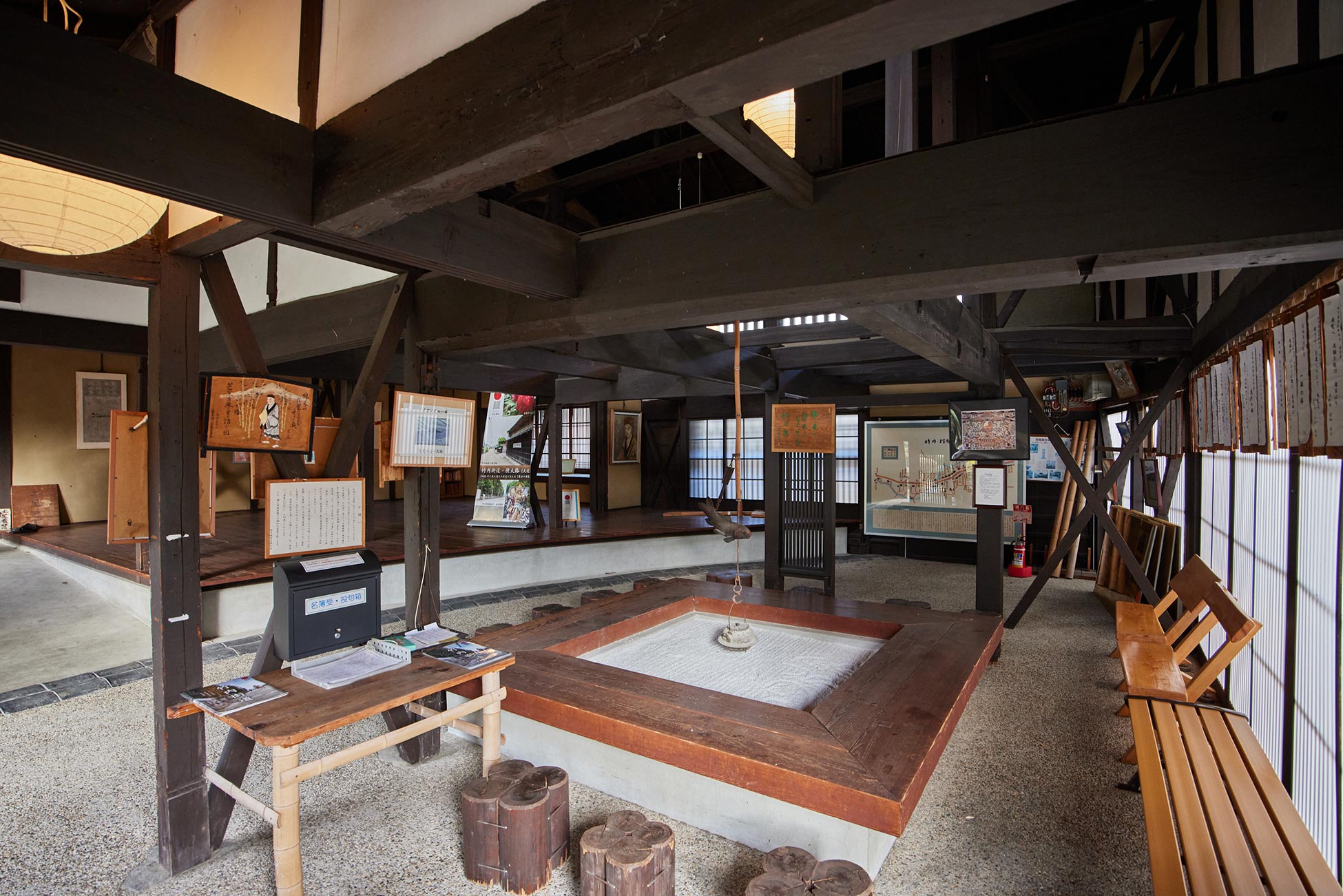
Watayumizuka, a tranquil rest stop in a converted traditional Japanese house, preserving Matsuo Basho's haiku legacy.
Along the tranquil ascent, you'll encounter a picturesque scene of homes adorned with tiled roofs and remnants of centuries-old inns dating back 300 years to the Edo period. Charming tiled-roofed houses and inns from the Edo period have flanked these paths, offering a nostalgic journey back to the vibrant atmosphere of that bygone era.
Watayumizuka
【Phone】 0745-44-5111(Commerce and Tourism Promotion Division, Industry and Tourism Department, Katsuragi City)
【Address】 604 Takeuchi, Katsuragi City, Nara Prefecture
【Access】 About a 20-minute walk from Iwaki Station on the Kintetsu Minami-Osaka Line
【Parking】 Available
【URL】 https://www.city.katsuragi.nara.jp/soshiki/shokokankoka/6/1/2076.html
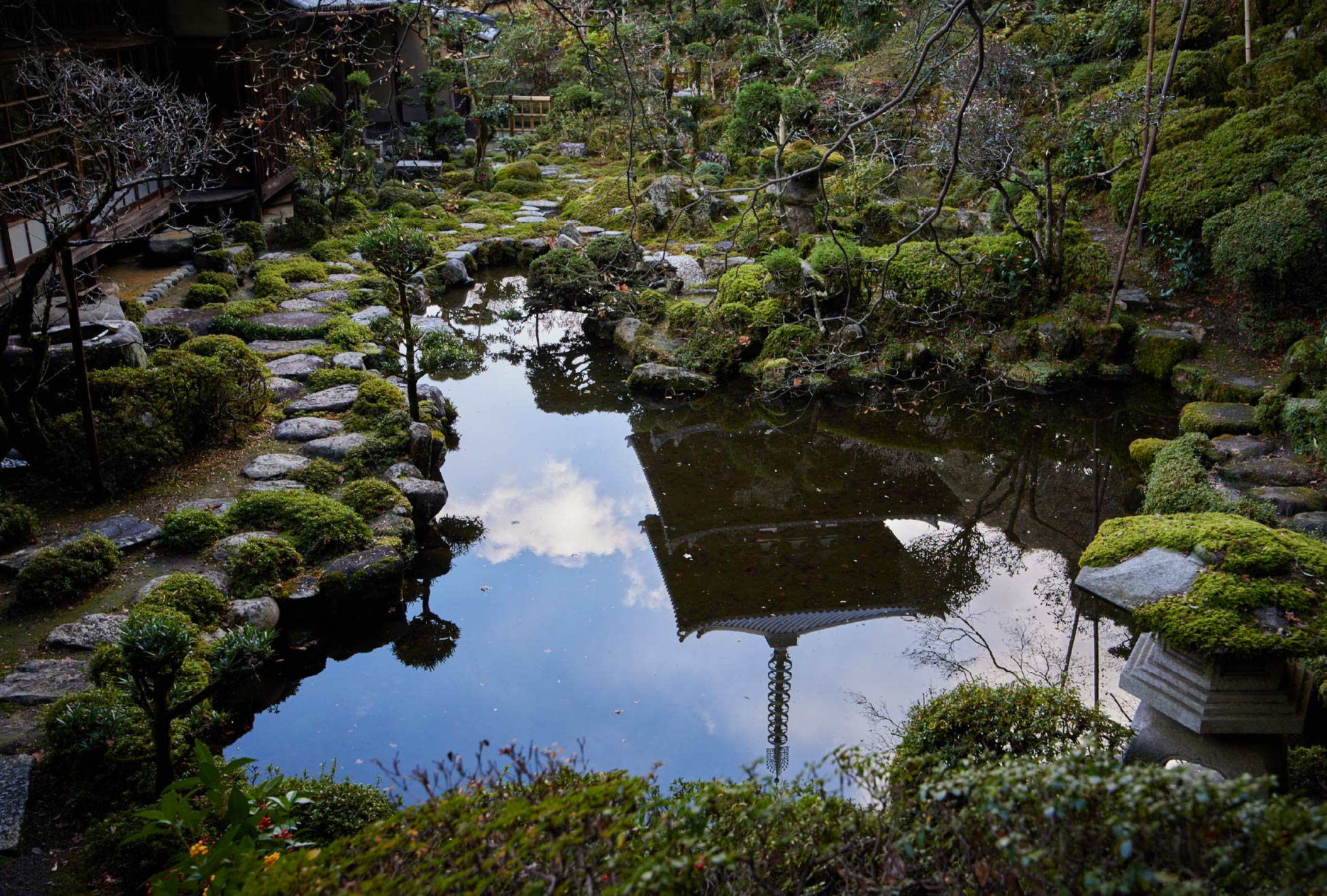
The Saina-in pagoda, one of the pagodas of the Taima-dera temple: discover the tranquil pod garden with suikinkutsu's melodic charm.
To the north of Takenouchi Kaido Road lies the esteemed Taimadera Temple. Legend has it that this sacred site was established in the 7th century by King Maroko, the half-brother of Prince Shotoku. Taimadera is renowned as a unique temple in Japan, boasting a remarkable collection of 13 pagodas representing both the Shingon and Jodo sects within its precincts.
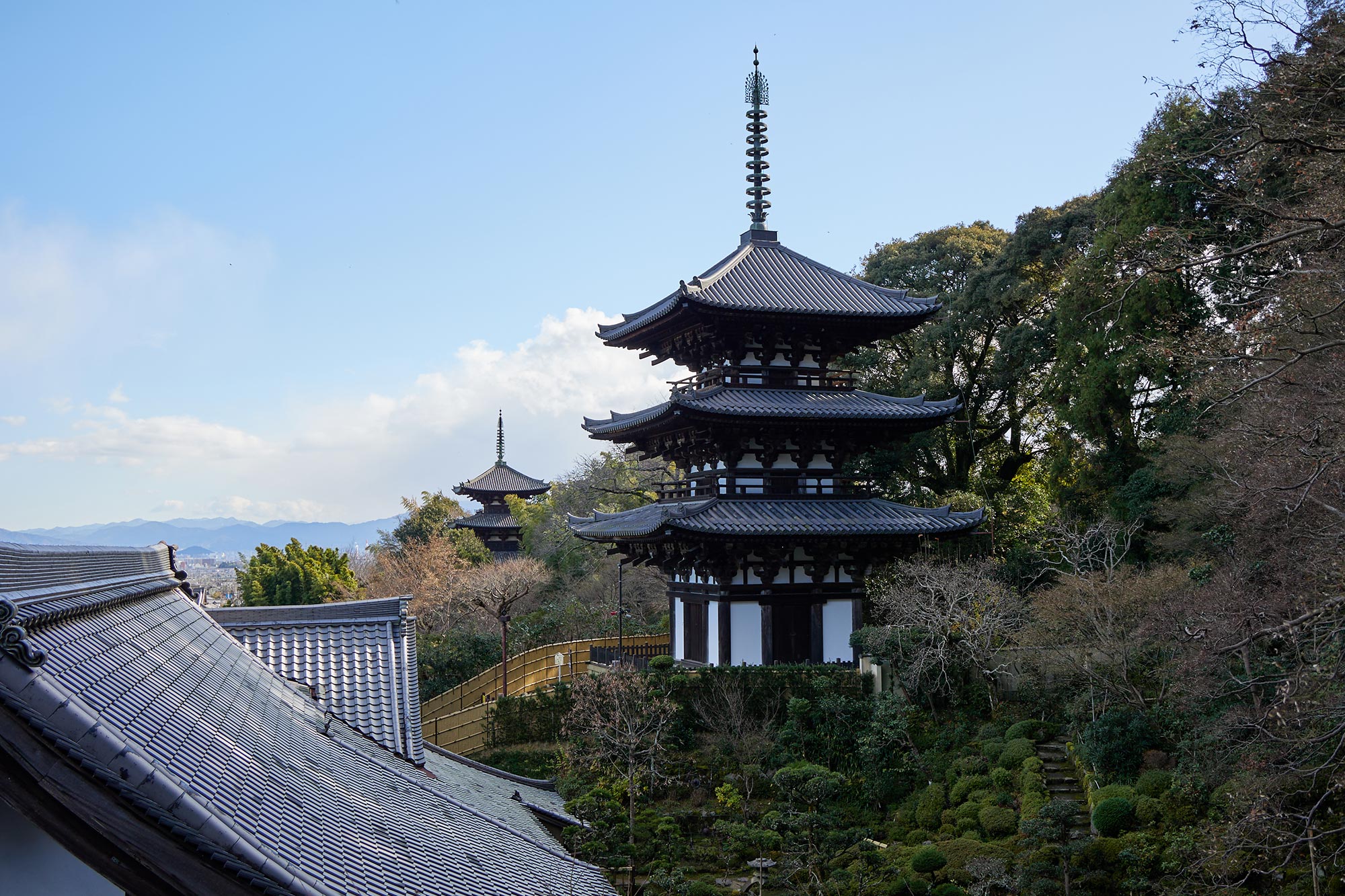
Iconic symmetry: Taimadera temple's twin towers grace the hillside.
Upon stepping into the temple, a sense of divine tranquillity envelops the air, weaving a sacred ambience that transcends time. Taimadera Temple not only stands as an ancient sanctuary but also offers solace through its harmonious connection with nature. Among its treasures lies the renowned Taima Mandala, believed to have been meticulously crafted by Princess Chujo during the Nara period (710-794). Leisurely exploring the temple grounds is highly recommended, immersing oneself in the spiritual treasures that abound.
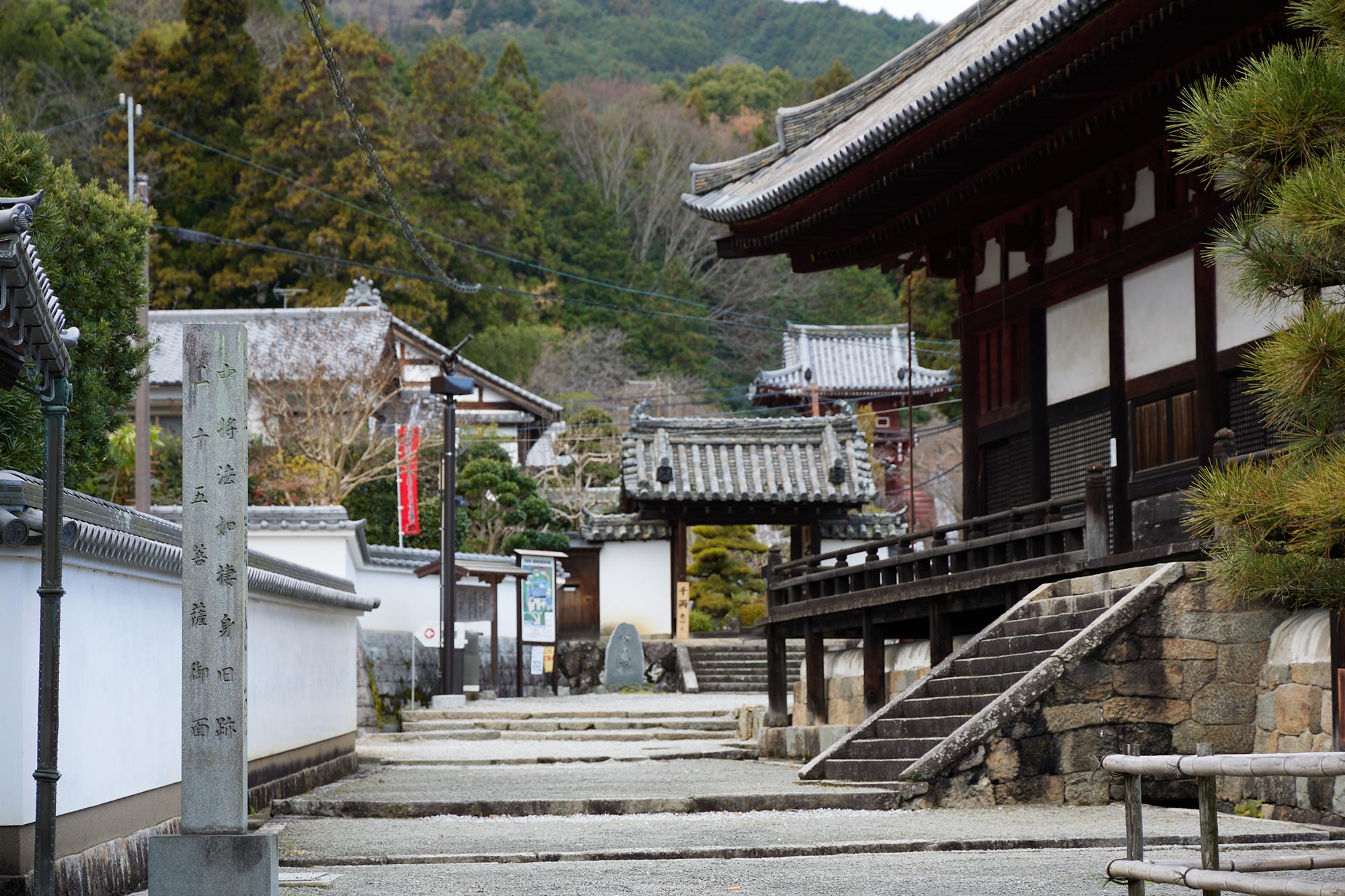
Step into history and stroll through 1,400 years of rich heritage.
The temple's treasures and tales span epochs, from the birth of the mandala in the Nara period (710-794) to the flourishing of esoteric culture in the Heian period (794–1185) and through the trials of the Medieval period and beyond, marked by the temple's resilience in the face of fiery trials. These anecdotes paint a vivid tapestry of the dramatic history that has unfolded over 1,400 years, offering glimpses into the enduring spirit and legacy of the Taimadera temple.
Taimadera Temple
【Phone Numbers】 0745-48-2008 (Okuno-in), 0745-48-2004 (Gonen-in), 0745-48-2202 (Saina-in), 0745-48-2001 (Nakano-bo)
【Hours】 9:00 AM–5:00 PM (for visits)
【Address】 1263 Taima, Katsuragi City, Nara Prefecture
【Access】 About a 15-minute walk west from Taima-dera Station on the Kintetsu Minami-Osaka Line
【Parking】 Privately operated (buses generally not allowed)
City-operated parking near the Taima-dera intersection (buses allowed)
【URL】
https://taimadera.org/ (Nakano-bo)
http://www.taimadera-sainain.or.jp/ (Saina-in)
http://taimadera-gonenin.or.jp/ (Gonen-in)
http://www.taimadera.or.jp/ (Okuno-in)
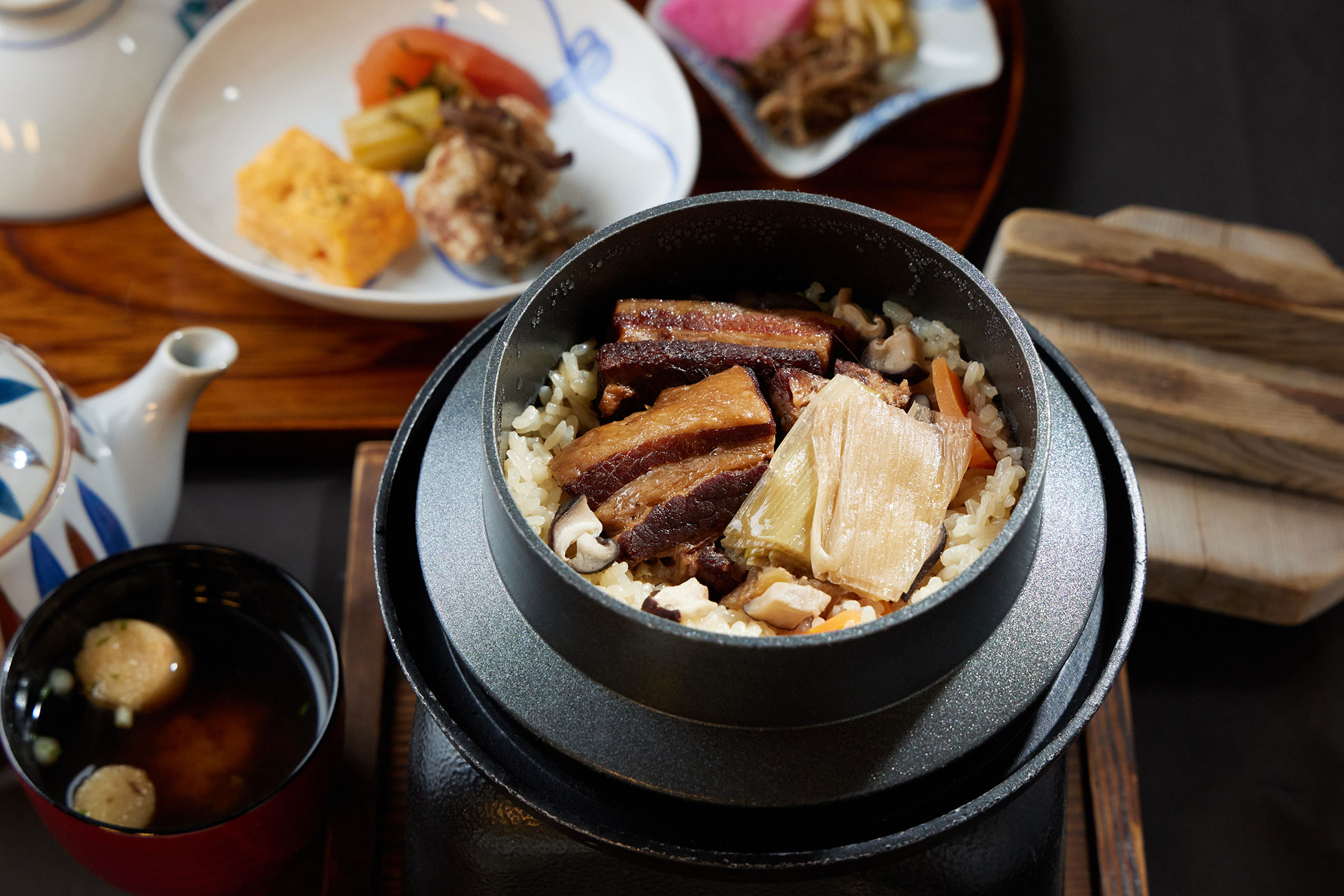
Indulge in speciality Kamameshi and dine at a reconstructed restaurant in the former Inn.
The tantalizing scent drifting from the gate beckons you to Kamameshi Tamaya, renowned for its signature dish, Kakuni Kamameshi.
Nestled along the approach, this culinary gem is housed within a beautifully renovated Edo-period (1603-1868) inn. It offers a meal and an immersive journey into the Japanese ambience.
Kamameshi Tamaya
【Phone】 0745-48-5470
【Hours】 11:00 AM–3:00 PM
【Address】 1242 Taima, Katsuragi City, Nara Prefecture
【Access】 About a 12-minute walk from Taima-dera Station on the Kintetsu Minami-Osaka Line
【Parking】 Not available (please use a nearby paid parking lot)
【URL】 https://kamameshi-tamaya.owst.jp/
KATSURAGI CITY EPISODE
03
Savor the Local Bounty
and delight in the tasteful
delicacies of the region.
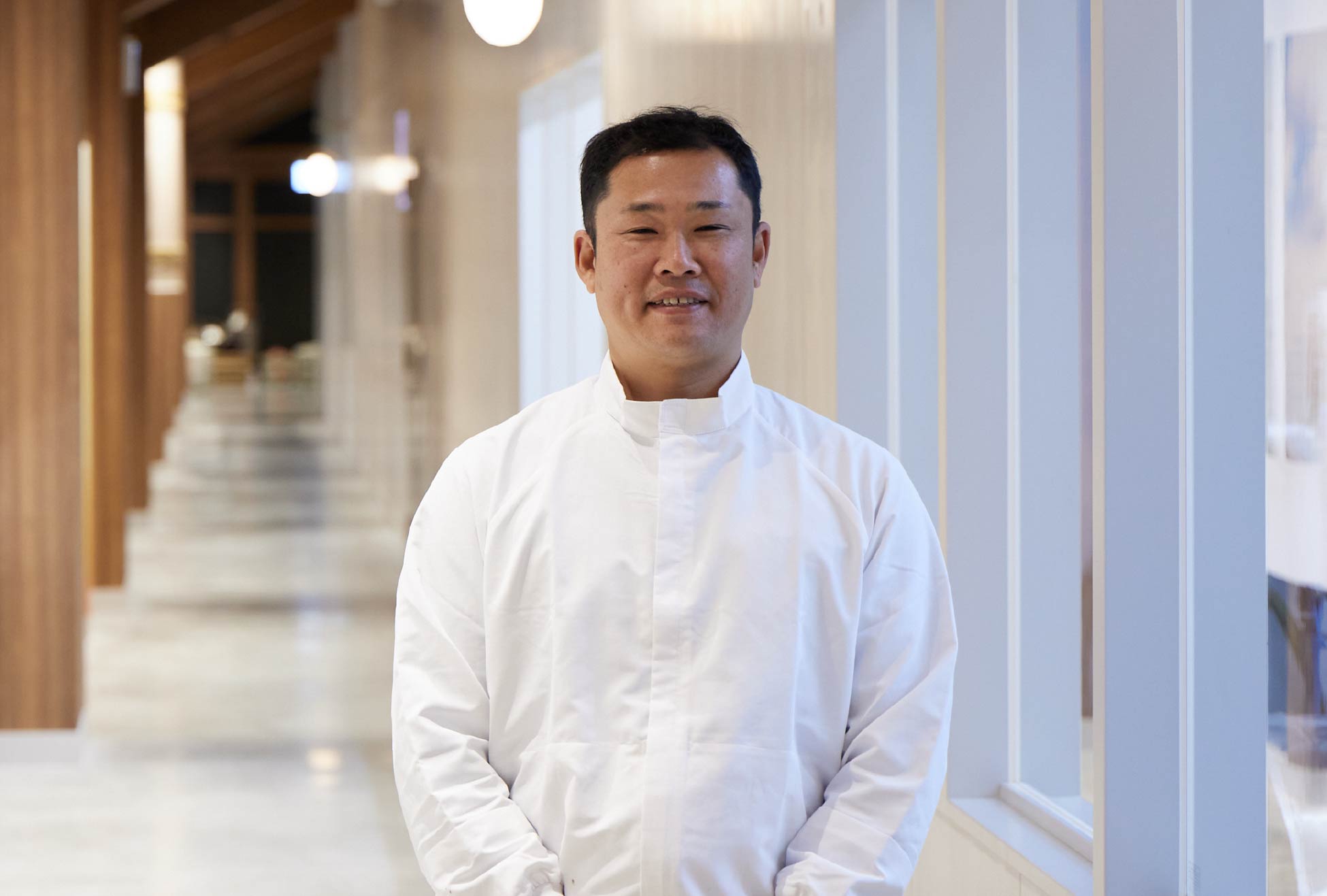
Pioneering Sake culture: brewery revolutionizes tradition, embracing a collaborative approach.
Abundant natural wealth: exploring the riches of Katsuragi city.
For five generations, Ume no Yado Sake Brewery has been crafting sake at the base of Mount Katsuragi. With a legacy spanning 130 years, the brewery embraces innovation while honouring tradition. Venturing beyond intuition, it embraces data management, and pioneers change by abandoning the traditional master brewer system.
In a historic move, young and female brewers take the helm, marking a bold step forward in the evolution of sake brewing in Japan.
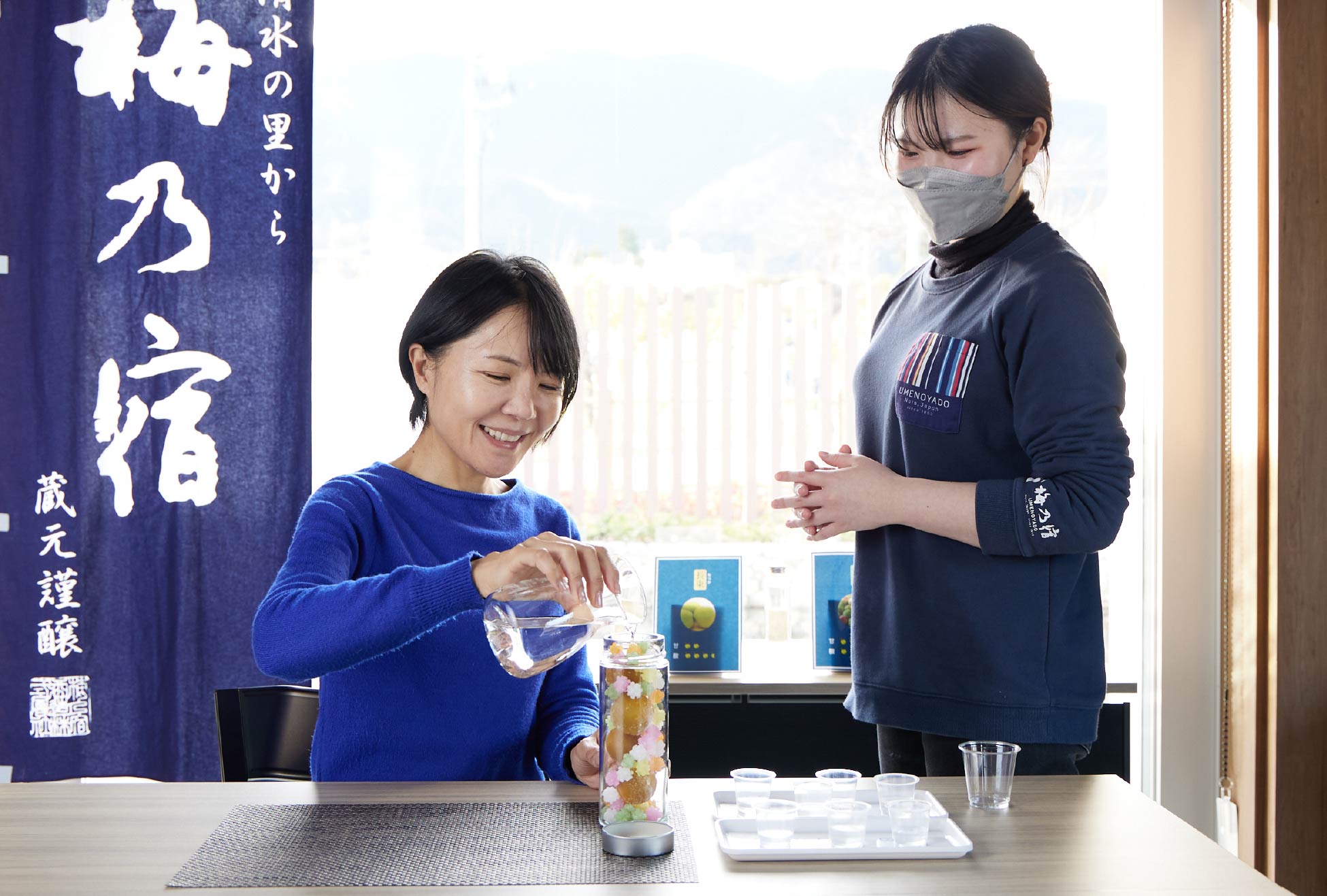
The plum wine-making experience, completed a month later, is a post-journey treat.
Blend tradition with innovation at the Ume no Yado Sake Brewery, where guided tours offer a glimpse into the craft of sake making (reservation required, ¥1,000 per person, includes tasting and souvenir).
Explore the state-of-the-art brewery, unveiled in the summer of 2022, before immersing yourself in the workshop experience at the on-site shop, where you can also learn firsthand the art of creating plum wine syrup and plum wine.
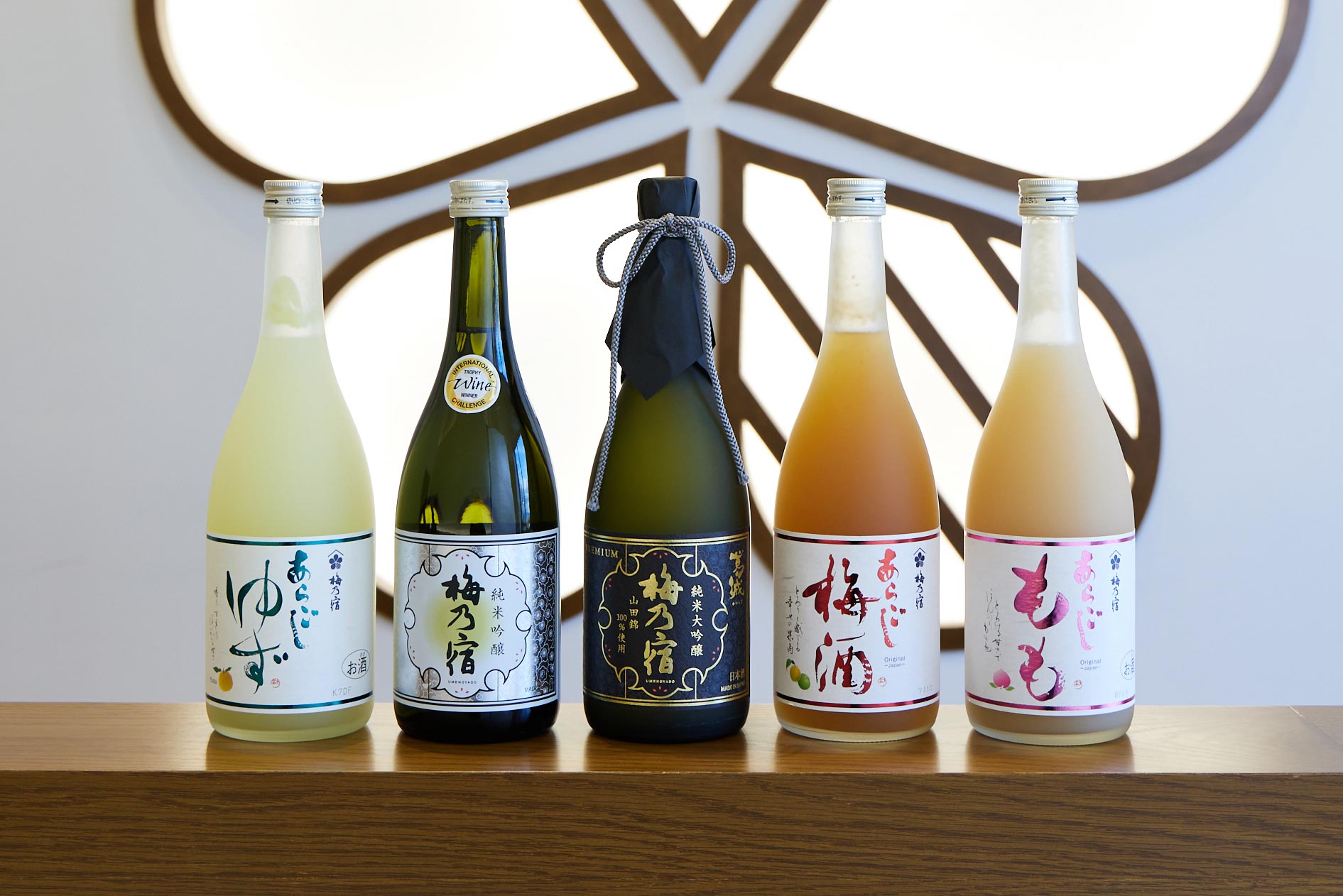
Beyond tradition, explore a variety of Sake-based liqueurs alongside local classics.
If sake isn't your preference, indulge in a sake-based liqueur, a sumptuous treat for discerning palates. Delight in the rich flavours of the full-bodied pulp, offering a luxurious dessert experience for adults. Additionally, at the on-site shop, discover an array of souvenirs, including gelato crafted from aromatic sake lees and original sweets, which are perfect for bringing home a taste of your visit.
Umenoyado Sake Brewery Shop
【Phone】 0745-43-9755
【Hours】 10:00 AM-6:00 PM
【Address】 27-1 Teraguchi, Katsuragi City, Nara Prefecture
【Access】 About a 25-minute walk from Kintetsu Shinjo Station on the Kintetsu Gose Line
【Parking】 Available
【URL】https://www.umenoyado.com/
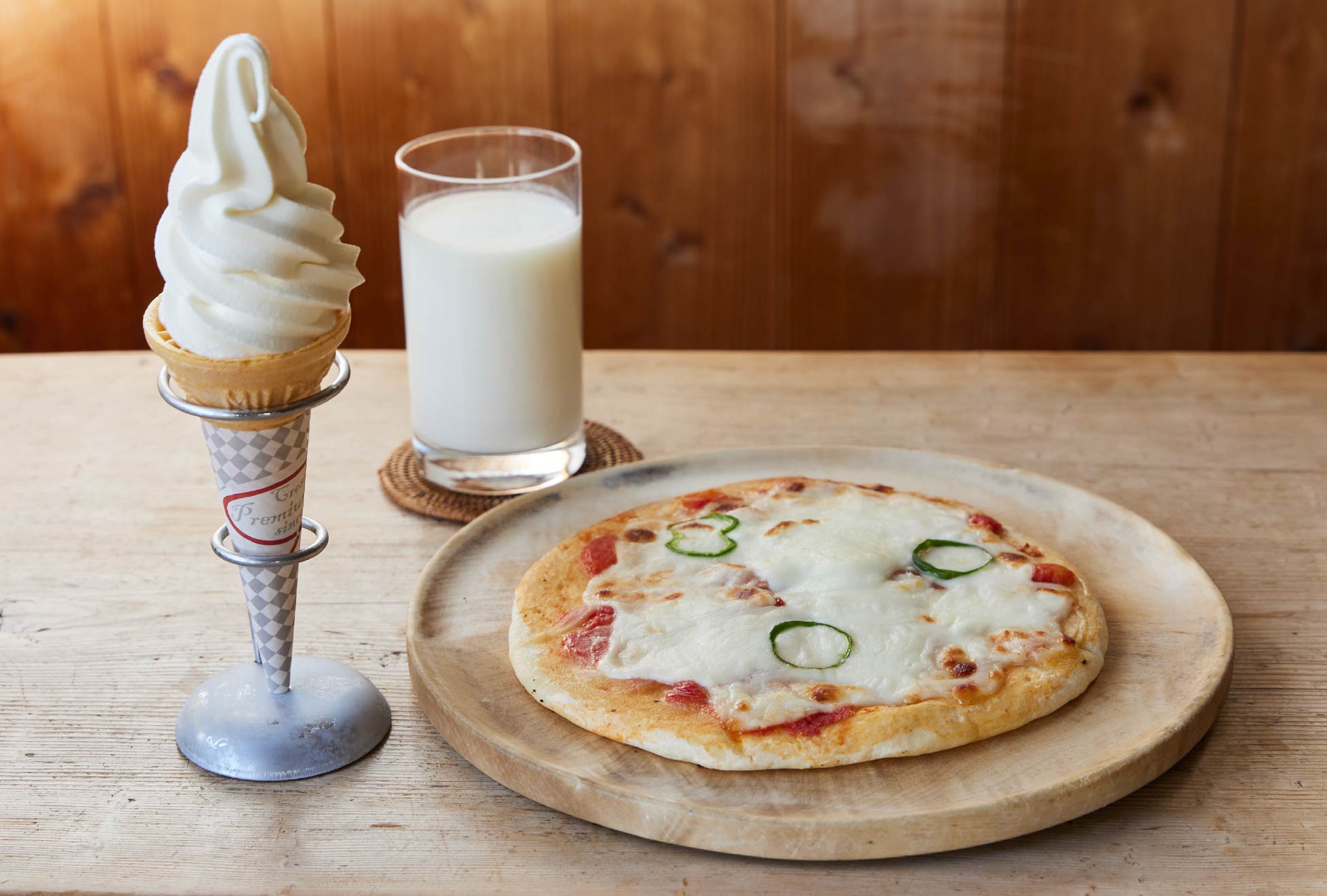
Farm-to-Table excellence: fresh ingredients from dairy farmer-owned restaurant, a haven for cheese enthusiasts.
Just a five-minute drive from Ume-no-yado, Katsuragi Kogen Latte Takamatsu awaits—a charming dairy farm operated by dedicated farmers. Their café boasts a family-friendly menu featuring delectable treats such as ice cream, yoghurt, and pizzas adorned with homemade mozzarella cheese and raw milk infused into the dough.
It's the perfect destination for a wholesome culinary experience amidst the tranquil beauty of Katsuragi.
Latte Takamatsu
【Phone】 0745-62-3953
【Hours】10:00 AM–5:00 PM (April–November), 10:00 AM–4:00 PM (December–March)
【Address】 278-3 Yamaguchi, Katsuragi City, Nara Prefecture
【Access】 From Nishimeihan Expressway Kashiwara IC or Minami-Hanna Road Katsuragi IC, head south on Route 30. Turn right at the Katsuragisanroku Park entrance intersection (towards the mountain), then left at Umenokizaka. About 5 minutes.
【Parking】 Available
【URL】 https://www.daiwa-mg.co.jp/ratte/index.html
KATSURAGI CITY EPISODE
04
Sweet confectionery
as a souvenir of your trip.
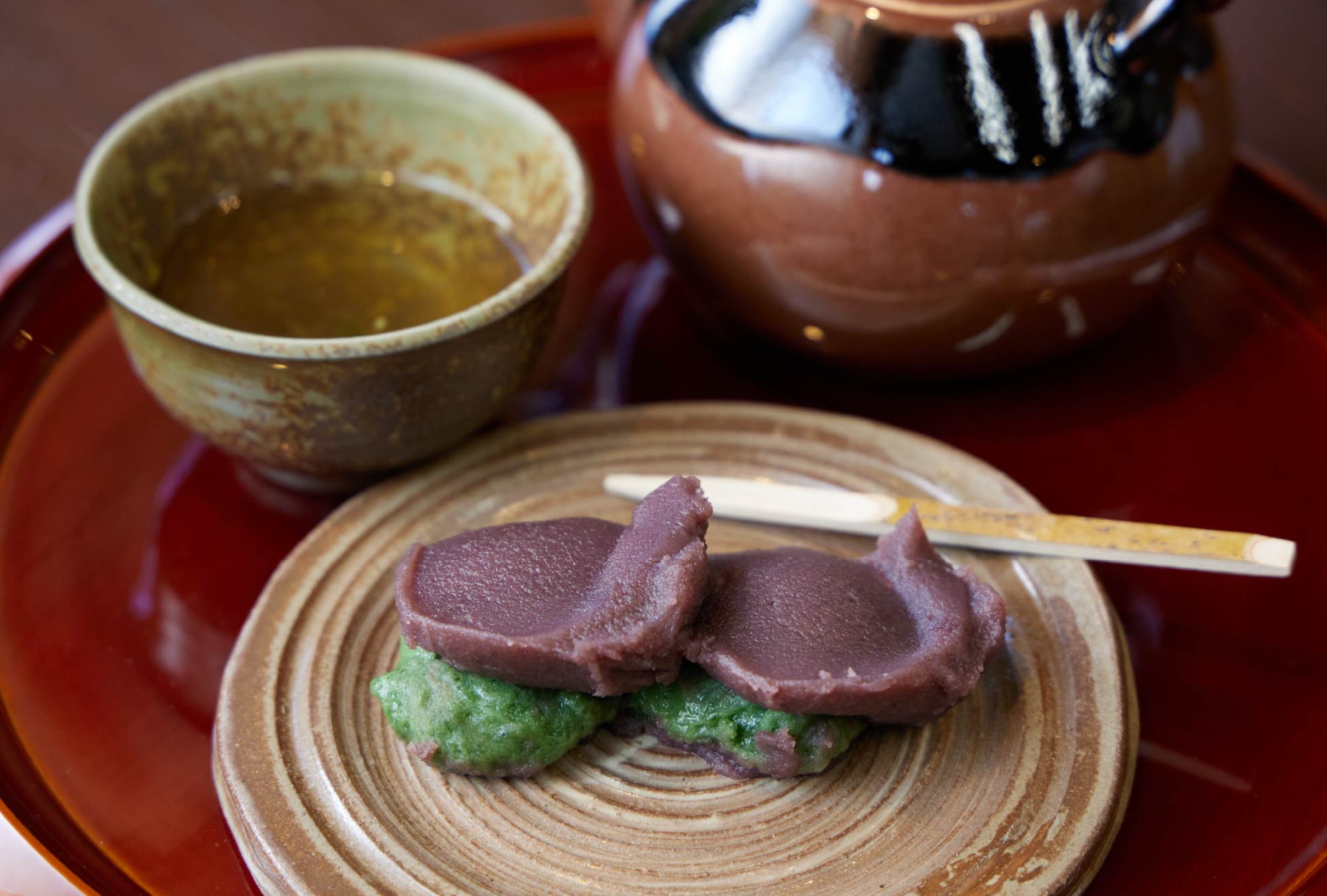
Homegrown mugwort: crafting savoury bean paste with exquisite balance and rich flavour.
The quintessential souvenir from Taimadera temple is the Yomogi Mochi from Chujodo Honpo, a beloved delicacy among visitors. These bite-sized treats are inspired by the traditional Antsuke mochi of the region.
They are crafted in the shape of delicate botan (peony) petals, evoking a sense of timeless elegance and local flavour.
With just one bite, the fresh aroma of mugwort fills your senses, evoking a sense of pure joy. Indulge in the melt-in-your-mouth texture of the rice cake, complemented perfectly by the sweetness of the red bean paste, leaving behind a graceful, moist aftertaste. Whether you choose to dine in or take away, both options are available to suit your preference. If you are weary from your explorations, we recommend resting in the shop's serene Japanese atmosphere, rejuvenating both body and spirit.
Chujo-do Honpo
【Phone】 0120-483-203
【Hours】 9:00 AM–5:00 PM
【Address】 55-1 Taima, Katsuragi City, Nara Prefecture
【Access】 About a 1-minute walk from Taima-dera Station on the Kintetsu Minami-Osaka Line
【Parking】 Available
【URL】 https://www.chujodo.com/
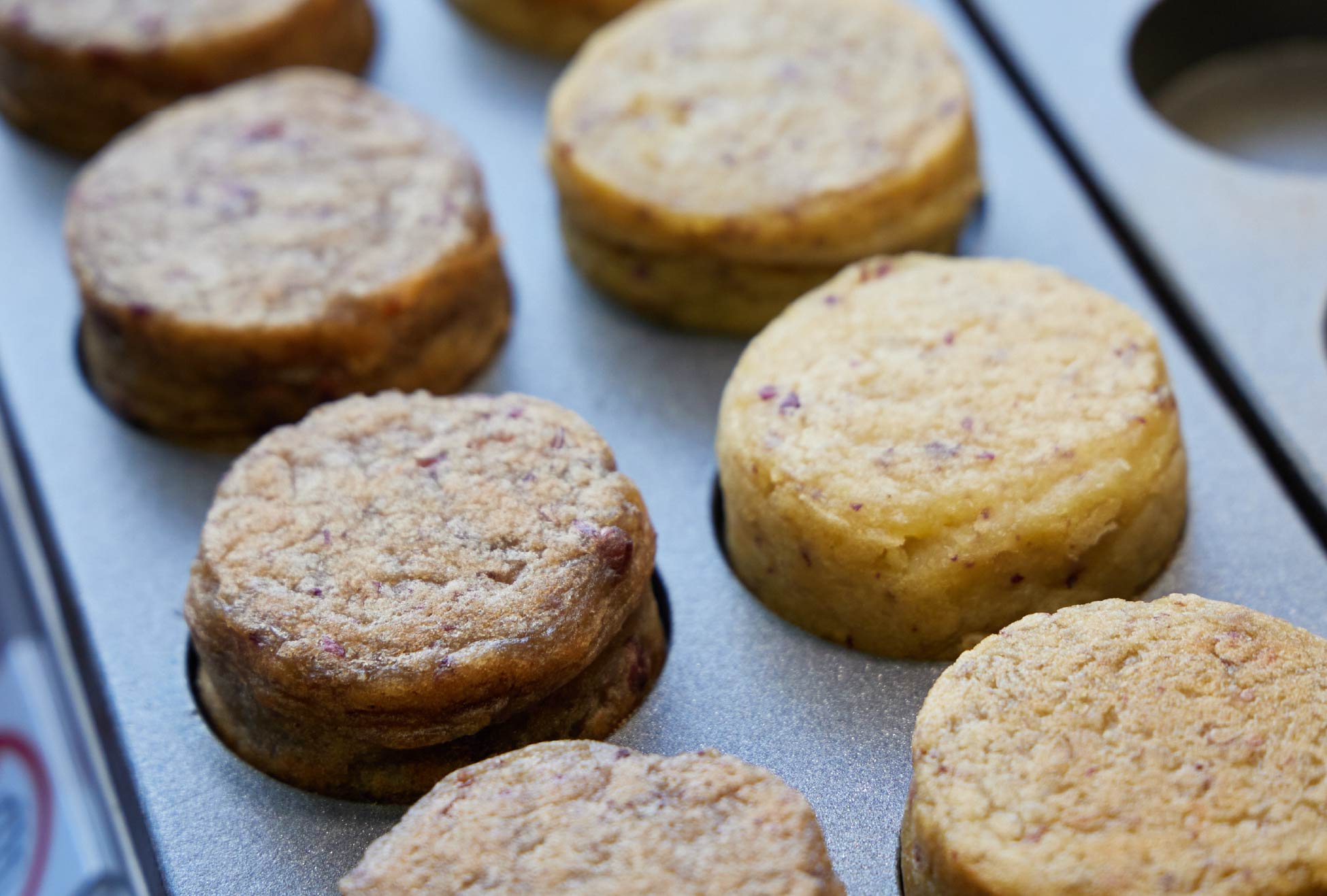
Gently nourishing buns, station-side delights filled with local maker's kindness, a hidden gem.
Nearby, nestled in front of Taimadera Station on the Kintetsu Minami-Osaka Line, lies Akihonpo—a beloved gem cherished by locals. Their speciality, the 'dokkoi manju', embodies the genuine kindness of its creators. Crafted with meticulous care using only sugar, rice flour, and sweet potatoes—without eggs or wheat flour—these handmade sweets are sure to warm your heart, much like the breathtaking scenery you've encountered on your journey.
Aki Honpo
【Phone】 0745-48-7588
【Hours】 10:30 AM–4:00 PM
【Address】 54-2 Taima, Katsuragi City, Nara Prefecture
【Access】 Located in front of Taima-dera Station on the Kintetsu Minami-Osaka Line
【Parking】 Available
【URL】 https://dokkoi-nara.com/